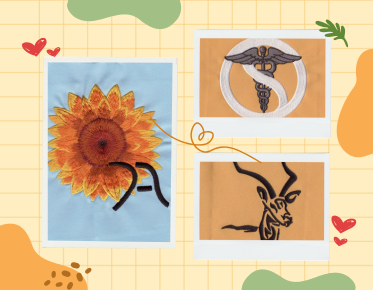Difference Between Vector and Raster Graphics and Their Applications
When it comes to graphic design, one of the fundamental aspects to understand is the difference between vector and raster graphics. Both have distinct characteristics and applications, making them suitable for different types of projects. Understanding these differences is crucial for designers, marketers, and anyone involved in digital or print media.
Understanding Vector Graphics
Vector graphics are created using paths defined by mathematical equations, allowing them to be infinitely scaled without losing quality. This characteristic makes vector graphics ideal for applications where the image needs to be printed in various sizes without compromising detail or clarity. A common use for vector graphics is in logo design. Since brand logos often need to be displayed on everything from business cards to billboards, vector format ensures that the logo can be resized as needed without any loss in quality.
Understanding Raster Graphics
Raster graphics, on the other hand, are composed of pixels. Each pixel holds a specific color value, and together they create a complete image. Due to their pixel-based nature, raster images can lose clarity when scaled up, resulting in a blurry or pixelated appearance. This makes raster images more suitable for detailed photographs and complex imagery where precise detail is necessary. Examples of raster formats include JPEG, PNG, and GIF.
Key Differences Between Vector and Raster
Scalability
As mentioned, vector graphics can be resized without losing quality, while raster graphics cannot. This makes vectors ideal for situations where flexibility is important, such as in a vector art conversion service provider's projects.
File Size
Raster files tend to be larger than vector files, primarily because they contain pixel data for every element in the image. Vector files, on the other hand, store data in a much more compact form as equations and points.
Editing
Editing a vector image is generally easier and more precise than editing raster images. This is because each element in a vector can be adjusted independently, allowing for more creative and flexible design changes.
Applications of Vector Graphics
Vector graphics are used extensively in various industries. They are indispensable in fields such as graphic design, digital printing, and advertising. Some common applications include:
- Logo Design: As vectors can be scaled to any size, they are perfect for logo design which requires versatility across different media.
- Product Packaging: Clear and scalable designs are critical in packaging where details must remain sharp regardless of size.
- Signage: Large format prints like billboards and banners benefit from vectors due to the need for scalability.
- Illustration and Digital Graphics: Artists often use vectors to create complex illustrations that can be scaled and manipulated with ease.
Applications of Raster Graphics
Raster graphics are well-suited for applications requiring high levels of detail and color depth. They are widely used in:
- Photography: Capturing intricate details and color variations, raster images are perfect for photographs.
- Web Graphics: When images are not intended to be drastically resized, like on a website, raster graphics work well.
- Digital Painting: Artists in digital painting leverage the detail that rasters can offer for stunning visuals.
- Print Media: While this seems counterintuitive, many magazine and newspaper prints utilize high-resolution raster images for photos and intricate graphics.
Choosing the Right Format for Your Project
Selecting between vector and raster graphics depends heavily on the project requirements. For businesses looking to maintain brand consistency, vector images ensure logos and brand materials maintain quality irrespective of size changes. For photographers or websites featuring detailed imagery, raster graphics provide the depth and richness in color necessary to capture viewer interest.
The Role of Eagle Digitizing in Graphic Design Services
For businesses and individuals seeking professional vector conversion services, Eagle Digitizing offers an array of solutions to ensure graphics are versatile and high-quality. Their expertise in converting raster images to vector graphics enables clients to benefit from scalable solutions that meet their specific design needs. With services spanning raster to vector conversion, vector tracing, and more, Eagle Digitizing helps clients achieve superior outcomes in both print and digital media
Conclusion
Understanding the differences between vector and raster graphics is essential for effectively using them in professional and creative capacities. As technology evolves, these graphic types will continue to play a pivotal role in design, printing, and media. For those who regularly work with graphic content, leveraging a team like Eagle Digitizing can provide the necessary expertise to optimize image quality and scalability for various applications.
.png)

